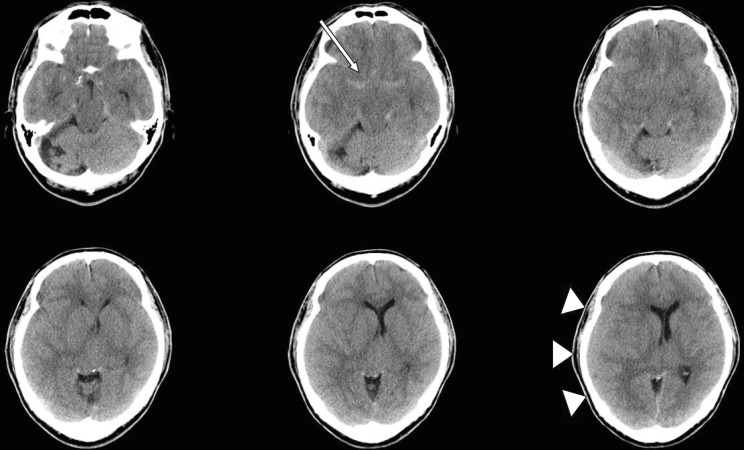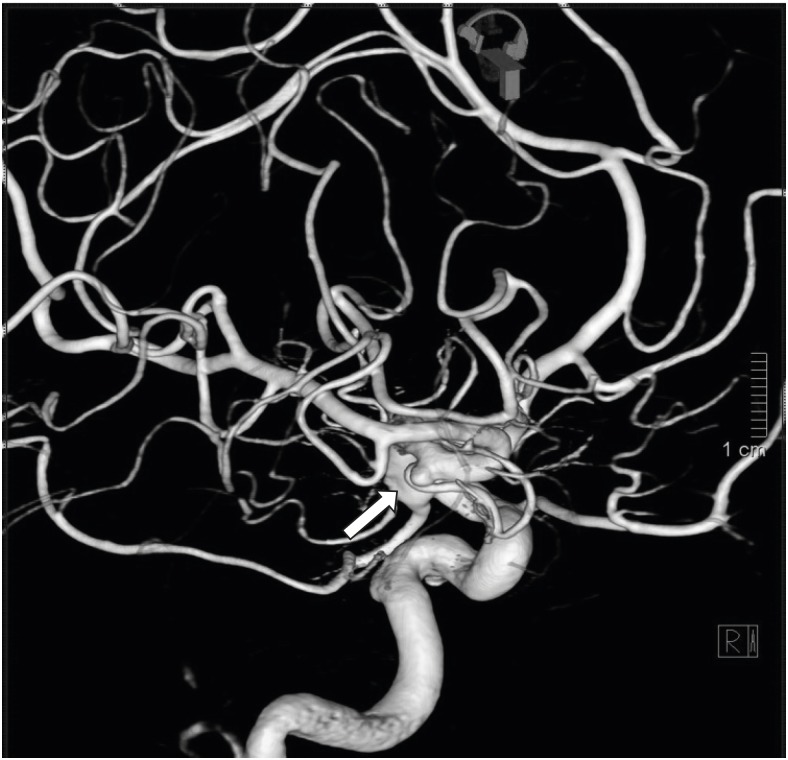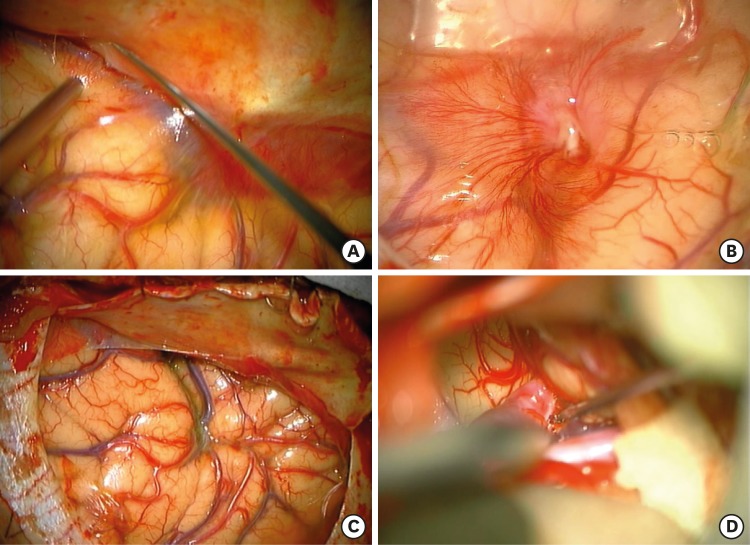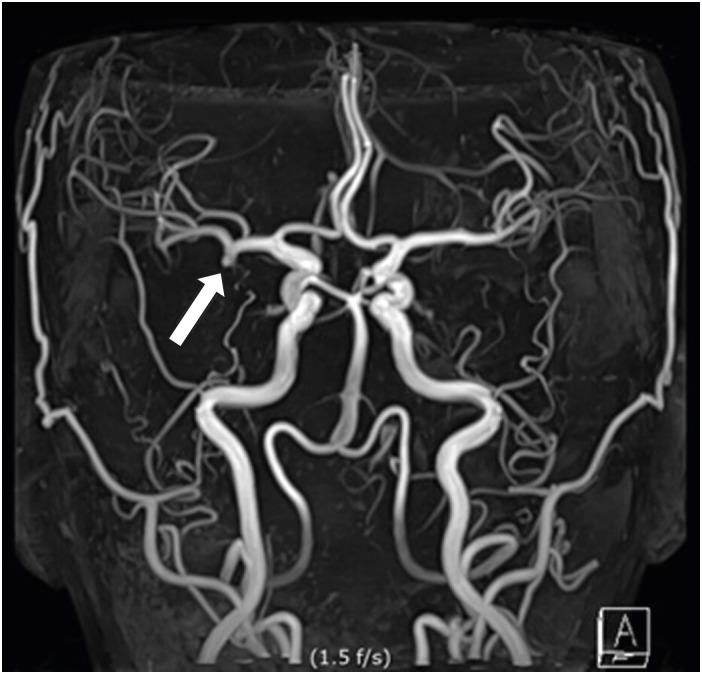1. al-Yamany M, Deck J, Bernstein M. Pseudo-subarachnoid hemorrhage: a rare neuroimaging pitfall. Can J Neurol Sci. 1999; 26:57–59. PMID:
10068810.
2. Ammerman JM. Pseudosubarachnoid hemorrhage: a zebra worth looking for. South Med J. 2008; 101:1200. PMID:
19005457.

3. Coady G, Brewer M, Maillloux P. Pseudosubarachnoid hemorrhage in a 42-year-old male with meningitis. Radiol Case Rep. 2015; 6:470. PMID:
27307899.

4. Ducruet AF, Grobelny BT, Zacharia BE, Hickman ZL, DeRosa PL, Andersen KN, et al. The surgical management of chronic subdural hematoma. Neurosurg Rev. 2012; 35:155–169. PMID:
21909694.

5. Eckel TS, Breiter SN, Monsein LH. Subarachnoid contrast enhancement after spinal angiography mimicking diffuse subarachnoid hemorrhage. AJR Am J Roentgenol. 1998; 170:503–505. PMID:
9456974.

6. Ferrante E, Regna-Gladin C, Arpino I, Rubino F, Porrinis L, Ferrante MM, et al. Pseudo-subarachnoid hemorrhage: a potential imaging pitfall associated with spontaneous intracranial hypotension. Clin Neurol Neurosurg. 2013; 115:2324–2328. PMID:
24075686.

7. Given CA 2nd, Burdette JH, Elster AD, Williams DW 3rd. Pseudo-subarachnoid hemorrhage: a potential imaging pitfall associated with diffuse cerebral edema. AJNR Am J Neuroradiol. 2003; 24:254–256. PMID:
12591643.
8. Hasan TF, Duarte W, Akinduro OO, Goldstein ED, Hurst R, Haranhalli N, et al. Nonaneurysmal “pseudo-subarachnoid hemorrhage” computed tomography patterns: Challenges in an acute decision-making heuristics. J Stroke Cerebrovasc Dis. 2018; 27:2319–2326. PMID:
29884521.

9. Isobe N, Sato H, Murakami T, Kurokawa Y, Seyama G, Oki S. Six cases of organized chronic subdural hematoma. No Shinkei Geka. 2008; 36:1115–1120. PMID:
19086442.
10. Lin CY, Lai PH, Fu JH, Wang PC, Pan HB. Pseudo-subarachnoid hemorrhage: a potential imaging pitfall. Can Assoc Radiol J. 2014; 65:225–231. PMID:
24325921.

11. Mendelsohn DB, Moss ML, Chason DP, Muphree S, Casey S. Acute purulent leptomeningitis mimicking subarachnoid hemorrhage on CT. J Comput Assist Tomogr. 1994; 18:126–128. PMID:
8282861.

12. Noguchi K, Ogawa T, Inugami A, Toyoshima H, Sugawara S, Hatazawa J, et al. Acute subarachnoid hemorrhage: MR imaging with fluid-attenuated inversion recovery pulse sequences. Radiology. 1995; 196:773–777. PMID:
7644642.

13. Rabinstein AA, Pittock SJ, Miller GM, Schindler JJ, Wijdicks EF. Pseudosubarachnoid haemorrhage in subdural haematoma. J Neurol Neurosurg Psychiatry. 2003; 74:1131–1132. PMID:
12876252.

14. Rocchi G, Caroli E, Salvati M, Delfini R. Membranectomy in organized chronic subdural hematomas: indications and technical notes. Surg Neurol. 2007; 67:374–380. PMID:
17350406.

15. Senthilkumaran S, Balamurugan N, Menezes RG, Thirumalaikolundusubramanian P. Role of Hounsfield units to distinguish pseudo-subarachnoid hemorrhage. Clin Toxicol (Phila). 2011; 49:948. PMID:
22070557.

16. Senthilkumaran S, Sweni S, Balamurugan N, Jena NN, Thirumalaikolundusubramanian P. Hounsfield units in pseudosubarachnoid hemorrhage-an old yet fascinating tool. Am J Emerg Med. 2015; 33:1095.

17. Spiegel SM, Fox AJ, Vinuela F, Pelz DM. Increased density of tentorium and falx: a false positive CT sign of subarachnoid hemorrhage. Can Assoc Radiol J. 1986; 37:243–247. PMID:
2950107.
18. Verma RK, Kottke R, Andereggen L, Weisstanner C, Zubler C, Gralla J, et al. Detecting subarachnoid hemorrhage: comparison of combined FLAIR/SWI versus CT. Eur J Radiol. 2013; 82:1539–1545. PMID:
23632159.

19. Yadav YR, Parihar V, Namdev H, Bajaj J. Chronic subdural hematoma. Asian J Neurosurg. 2016; 11:330–342. PMID:
27695533.








 PDF
PDF ePub
ePub Citation
Citation Print
Print




 XML Download
XML Download